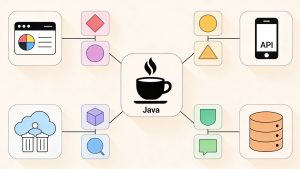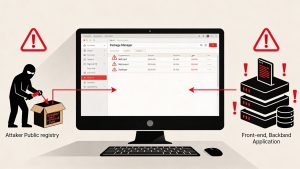
Introduction to Data Observability
Data has become the fuel that powers decision-making, AI models, customer experiences, and operational efficiency. Every click on an e-commerce site, every transaction in a banking system, and every patient record in healthcare contributes to a vast pipeline of information that flows across multiple systems and applications.
But with this scale comes complexity and complexity often introduces blind spots. Data pipelines break silently. APIs return incomplete payloads. Schemas change without warning. Dashboards that executives depend on suddenly display outdated or misleading numbers. This phenomenon is commonly referred to as data downtime, the period when data is incomplete, inaccurate, or unavailable.
Enter data observability.
Much like application observability (where logs, metrics, and traces help developers understand the health of software systems), data observability is the practice of monitoring, tracking, and ensuring the reliability of data pipelines end-to-end. It provides visibility into the freshness, volume, distribution, schema, and lineage of data, ensuring that stakeholders can trust the information they use for decisions.
Why does this matter? Because in modern enterprises:
- A missed pipeline update can lead to millions lost in revenue forecasts.
- An undetected schema change can cause ML models to fail silently.
- A broken API integration can disrupt customer experience in real time.
This blog will break down what data observability is, why it matters, its five pillars, best practices, challenges, and future trends with hands-on coding examples in Python, SQL, and API monitoring to make the concepts tangible for developers and data engineers.
Why Data Observability Matters
Imagine an e-commerce company running daily revenue dashboards. If the sales table fails to update due to a broken ETL job, leadership may make wrong decisions based on outdated data.
Why it matters:
- Guarantees trustworthy insights for stakeholders.
- Enables proactive monitoring instead of reactive firefighting.
- Saves engineering time and reduces data downtime.
- Ensures compliance in finance, healthcare, and regulated industries.
Now let’s see how this works in practice.
The Five Pillars of Data Observability (with Examples)
1. Freshness
Freshness ensures your data is up-to-date.
Python example: Check when a table was last updated
import datetime
import psycopg2
# Connect to Postgres
conn = psycopg2.connect("dbname=mydb user=admin password=secret")
cur = conn.cursor()
# Query last update timestamp
cur.execute("SELECT MAX(updated_at) FROM sales;")
last_update = cur.fetchone()[0]
if (datetime.datetime.now() - last_update).seconds > 3600:
print(" Data freshness issue: sales table not updated in the last hour!")
else:
print(" Sales data is fresh.")2. Volume
Volume checks whether the row counts are as expected.
SQL example: Monitor daily record counts
SELECT
COUNT(*) AS total_rows,
DATE(created_at) AS batch_date
FROM orders
GROUP BY batch_date
ORDER BY batch_date DESC
LIMIT 7;If today’s row count drops significantly compared to yesterday, you may have a data ingestion failure.
3. Distribution
Distribution ensures values are within normal ranges.
Python example: Detect anomalies in transaction amounts
import pandas as pd
from sklearn.ensemble import IsolationForest
# Load sample data
df = pd.DataFrame({"amount": [100, 102, 98, 5000, 105, 110, 99]})
# Apply anomaly detection
model = IsolationForest(contamination=0.1)
df['anomaly'] = model.fit_predict(df[['amount']])
print(df)This flags outliers like 5000 in a normally small dataset.
4. Schema
Schema checks ensure your data structure hasn’t changed unexpectedly.
Python example: Verify schema against expectation
expected_columns = {"id", "customer_name", "email", "amount"}
actual_columns = set(df.columns)
if expected_columns != actual_columns:
print(" Schema drift detected:", actual_columns - expected_columns)
else:
print("Schema matches expected format.")5. Lineage
Lineage traces where data comes from and where it flows. While full lineage requires specialized tools, you can track dependencies manually.
Airflow DAG snippet with lineage
from airflow import DAG
from airflow.operators.python_operator import PythonOperator
def extract_orders():
# Extract from API
pass
def transform_orders():
# Clean and join with products
pass
def load_orders():
# Save into data warehouse
pass
dag = DAG('orders_pipeline')
t1 = PythonOperator(task_id='extract', python_callable=extract_orders, dag=dag)
t2 = PythonOperator(task_id='transform', python_callable=transform_orders, dag=dag)
t3 = PythonOperator(task_id='load', python_callable=load_orders, dag=dag)
t1 >> t2 >> t3This DAG structure gives visibility into lineage from API-Transformation-Warehouse.
Data Observability vs Data Quality Tools
While data quality tools enforce rules (e.g., emails must have @domain), data observability automatically monitors pipelines for health, anomalies, and lineage.
Think of quality as static rules, while observability is dynamic monitoring.
Best Practices for Data Observability
- Automate anomaly detection– Don’t rely on manual checks.
- Alert through Slack/PagerDuty– Integrate with existing workflows.
- Focus on critical pipelines first– Revenue dashboards, ML pipelines.
- Track metadata– Schema, freshness, and row counts should be logged daily.
Advanced Coding Example: API Monitoring
Data observability also applies to API-based pipelines.
Python example: Monitor API data freshness and schema
import requests
import json
from datetime import datetime
url = "https://api.example.com/orders"
response = requests.get(url)
data = response.json()
# Freshness check
latest_timestamp = max([datetime.fromisoformat(order["timestamp"]) for order in data])
if (datetime.now() - latest_timestamp).seconds > 3600:
print("API data is stale!")
# Schema check
expected_keys = {"id", "customer_id", "amount", "timestamp"}
for order in data:
if set(order.keys()) != expected_keys:
print("API schema mismatch detected:", set(order.keys()))This type of monitoring is critical when APIs feed downstream dashboards.
Challenges of Data Observability
- Alert fatigue from too many false positives.
- High costs of enterprise tools.
- Privacy concerns with monitoring sensitive pipelines.
- Skill gaps in ML-based anomaly detection.
The Future of Data Observability
- AI-driven observability– ML models will predict failures before they occur.
- Real-time monitoring– For Kafka and streaming pipelines.
- Data contracts– Agreements between producers and consumers to prevent silent breaks.
- Unified platforms– Application + data observability merging.
Conclusion
Data observability is the backbone of reliable analytics and AI pipelines. By monitoring freshness, volume, distribution, schema, and lineage, teams can ensure their data is trustworthy and actionable.
Through Python scripts, SQL checks, and API monitoring examples, we’ve seen how engineers can implement observability at different stages of a pipeline.
In an age where data drives everything from dashboards to AI predictions observability is not optional, it’s essential. Organizations that invest in it today will save costs, prevent downtime, and build long-term trust in their data ecosystem.



